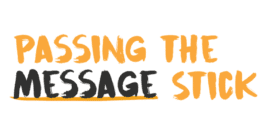The time to do your 100 day plan is now

28 September 2021 at 8:14 am
With a federal election likely in either December 2021 or March next year, it is time to get your own 100 day plan in order, writes Neil Pharaoh.
When the polls draw to a close, and the governor general swears in a new government, the clock starts on another agenda – the first 100 days of government (aka 100 day plan). All incoming and returning governments will have a 100 day plan ready to go should they win. Social purpose organisations also need to have their own version of this plan, to ensure commitments will be delivered or new policy settings hashed out, and now is the time to write it.
With an election potentially weeks away, we have been busy with our clients and many in the sector to prepare “election sprints”, to make sure the social purpose sector can capitalise on the federal election.
There are six main components of these sprints, which I will step through and really encourage everyone to invest a bit of time in now, whether you are chasing advocacy, policy or funding. It isn’t too late to play a role in the election, but the clock is ticking!
- Map your stakeholders
- Define your strategy
- Refine the messaging
- Identity your capacity
- Build your collateral
- Get your tactical, practical and logistics in order
Let’s kick off with mapping your stakeholders
At Tanck we categorise our government stakeholders into five categories – remember for any decision often up to 100 people across these five categories will be included – you need to make sure yours are well mapped now.
The first of these categories is ministers and shadow ministers; which relate to your portfolios? Do you have policy alignments into other portfolio areas? Do the government and opposition have mirror positions? And do not forget the junior ministers and parliamentary secretaries or their shadows. The second category, which is even more critical at this time, is elected MPs and candidates; those tied to an electorate. The third category is policy departments and agencies – think health, education, science and similar. Fourth is central agencies, Treasury, Finance and Premier and Cabinet (or Prime Minister and Cabinet); many of the central agencies mirror the policy departments in structure. And finally, the political parties themselves, their policy committees, structures and systems. So, job number one – map across these five groups, everyone you need to focus on.
Next, define your strategy
This includes looking at different time horizons and different quantities of funding or change – think small, medium and large, and short, medium and long term. This simple three by three matrix is a great way and a useful tool to plan what you hope to achieve from government. It is also important to be clear as to if you are chasing policy, regulation, legislation or funding (or a mix of these) and articulate it clearly. Knowing what you want, being able to articulate it, and producing tightly written summaries will be key.
Refine the messaging
What is freedom to one party is oppression to another. Messaging counts – you need different communications styles and substance for different stakeholders and different political parties. Ministers and shadow ministers will be interested in different things to candidates or MPs, which will be different to the public servants or political party – and both sides of politics will have slightly different ways of expressing ideas, policies and announcements. One of the worst things you can do is develop content using a “one size fits all” approach. Our Tanck team have been ministerial advisors and campaign managers – and they know first-hand what it is like to receive a letter making an ask that doesn’t speak to their ideology. And where does it go? More often than not, to the bottom of the pile or in the bin.
Identify your capacity
Who is responsible in your team for each element of the campaign or advocacy? Have you got a 5 per cent rule where everybody can help out? Do you need consultants or extra staff to give you extra capacity? Working through your ability to deliver and execute is key. You do not want strategies sitting on the shelf which cannot be executed – and this is all about capacity. Looking at creative ways to leverage your team, and external support, including your board, will be integral at this stage – and asking people to help earlier is always easier than leaving things to the last minute. If you are doing mailouts or other campaign activities, start to schedule “all hands” supporting the envelope stuffing now, as one example.
Build your collateral
Investing in content, which is fit for purpose, easily able to be edited and tailored; yet which is also simple, clear and short is easier said than done. We use a couple of key principles in this space – keep it super simple, think about what is in it for the person you are writing too, use infographics and visuals, and keep things short.
Get your tactical, practical and logistics in order
Whether it be mailouts, social media following or invites to political events, all these systems can be sorted out ahead of time. Processes to manage RSVPs and send “save the dates”, systems to send emails, letters and other communication should all be bedded down and sorted, ready to go for an election. Smart organisations are already thinking about briefs to inform red and blue books (which public servants write for incoming governments), as well as what media, policy and research they can align to the election cycle. Part of getting logistics in order is also scheduling timelines, remember most candidates and MPs will be doing voter contact as a priority in the final month before an election – street stalls, door knocking, phone calls, and handing out at pre-poll – which means everything you do needs to be happening before MPs and candidates reach those final four weeks – so plan accordingly!
Some of the most exciting work for government engagement wonks like me is happening right now, getting the above wrapped up and making sure the election is tied in a bow. Whether the election is December or March, these are the things you can get ready for now – so that your 100 days up to the election is smooth sailing.
About the author: Neil Pharaoh has spent most of his voluntary and professional life in and around social purpose organisations, government, public policy, and advocacy. Neil has been behind many leading social policy and advocacy campaigns on gender rights, equality, medical research, and education, and ran for Parliament in Victoria in 2014 and 2018. Neil is co-founder and director of Tanck, which focuses on better engagement with government, and regularly runs workshops and advocacy sessions and advises leading social purpose organisations on their government engagement strategy and systems.
Happenings on the hill is a fortnightly column focusing on all things politics, policy, campaigns and advocacy. Stay tuned for updates around political trends and elections, lobbying and advocacy news, and hints, tips and ideas on government engagement that are specifically written for the social purpose/for purpose sector.
If you have any ideas, suggestions, tips or questions, please feel free to email Neil Pharaoh at neil@tanck.com.au or reach out to him via social media at LinkedIn, Twitter, Instagram and Facebook.







